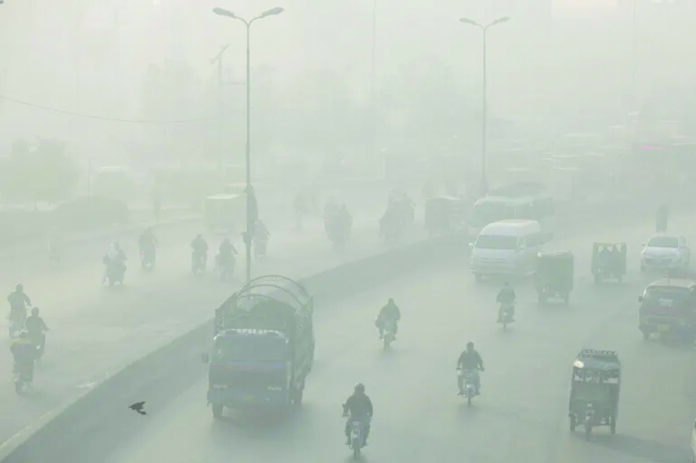Lahore’s smog crisis in 2024 poses significant risks to public health, economic stability, and environmental sustainability. Air quality indexes now rank the city among the world’s most polluted. A survey by the Lahore Chamber of Commerce and Industry (LCCI) found that 75 percent of residents reported respiratory issues, while 90 percent demanded stricter regulations on industrial emissions. A separate study by the University of Punjab revealed that smog-related health issues cost the city’s economy approximately PKR 150 billion annually. Furthermore, the 2024 World Air Quality Report ranked Lahore as the most polluted city globally, with around 137,000 deaths in Pakistan linked to air pollution.
This toxic haze, fueled by agricultural burning and industrial emissions, causes severe health issues like respiratory emergencies, cardiovascular diseases, and increased cancer risk. The smog crisis in Lahore is a complex issue with multifaceted causes and consequences. Agricultural burning contributes 40 percent of the pollution, while industrial emissions and vehicle exhaust account for 30 percent and 20 percent, respectively. Inadequate waste management adds another 10 percent to the toxic share.
Economically, the city incurs Rs 153 billion in losses, disrupting commerce, transportation, and tourism. Smog-related stress has damaged 40 percent of crops, while acid rain has led to a 30 percent decrease in soil fertility and a 25 percent increase in soil pollution. Consequently, agricultural exports dropped by Rs 50 billion, and the agricultural GDP declined by 10 percent. Farmers have suffered, with 35 percent reporting reduced incomes and 25 percent considering migration due to smog-related issues.
Lahore’s smog crisis stems from multiple factors, including rapid urbanization, population growth, and pollution from over 2 million vehicles. Additionally, Lahore’s geography and climate— characterized by atmospheric conditions and temperature inversions— trap pollutants in the air, worsening the smog. The burning of crop residues, particularly rice paddies, releases harmful gases, including carbon monoxide and volatile organic compounds, that can lead to various diseases in humans.
To effectively reduce smog, a multi-faceted approach is necessary, combining governmental policies, technological innovations, and individual actions. The government can enforce strict emission regulations and promote sustainable practices. Individuals can contribute by using public transportation, carpooling, reducing energy consumption, and supporting reforestation efforts. Awareness campaigns can also make a difference. By adopting a collaborative and holistic approach, we can significantly reduce smog levels, ensuring a healthier environment and a sustainable future for generations to come.
The consequences of this issue are dire. To combat Lahore’s smog crisis, various organizations have proposed solutions for 2024. The Punjab government’s Smog Control Action Plan regulates industrial emissions and promotes clean energy, while the Ministry of Climate Change’s Clean Air Action Plan establishes air quality monitoring and vehicle emission stations.
Non-Governmental Organizations (NGOs) like the Lahore Waste Management Company (LWMC) and World Wildlife Fund (WWF) have planted thousands of trees to combat air pollution. LWMC also explores waste-to-energy initiatives to reduce waste and generate clean energy, whereas WWF Pakistan conducts research and advocates for policy changes to address smog. The private sector, including Honda Atlas Cars Pakistan Limited (HACPL), is introducing electric vehicles.
Some organizations are funding smog mitigation efforts. The Punjab government allocated Rs 5 billion for the “Smog-less Punjab” initiative, while the Lahore Development Authority (LDA) provided Rs 1.5 billion for green infrastructure development. NGOs have also contributed, including WWF Pakistan, which allocated Rs 50 million for air quality monitoring. The Citizens Foundation (TCF) funded Rs 20 million for community-based smog mitigation initiatives, and the Green Pakistan Alliance (GPA) allocated Rs 15 million for sustainable transportation initiatives.
To effectively reduce smog, a multi-faceted approach is necessary, combining governmental policies, technological innovations, and individual actions. The government can enforce strict emission regulations and promote sustainable practices. Individuals can contribute by using public transportation, carpooling, reducing energy consumption, and supporting reforestation efforts. Awareness campaigns can also make a difference. By adopting a collaborative and holistic approach, we can significantly reduce smog levels, ensuring a healthier environment and a sustainable future for generations to come.























